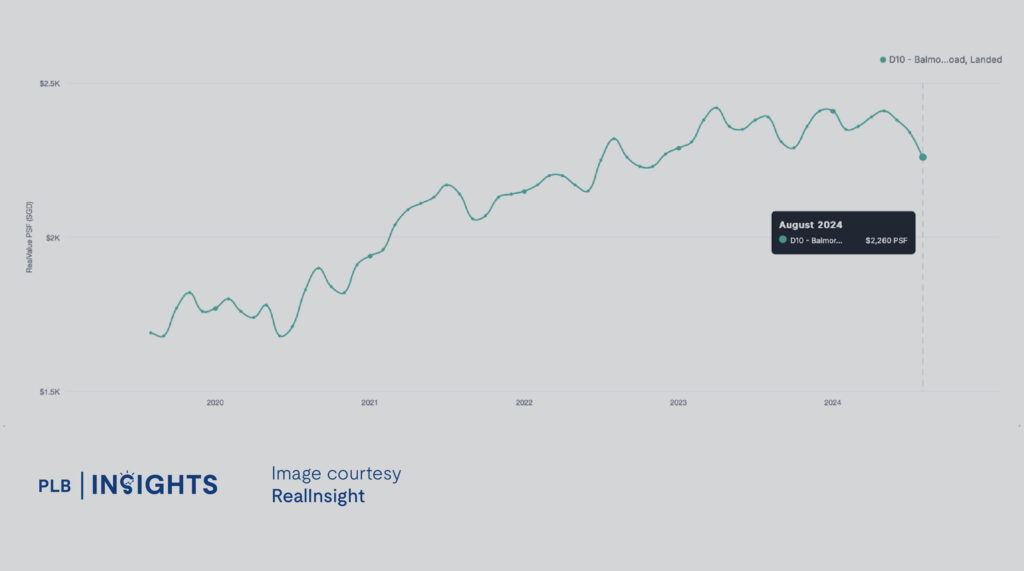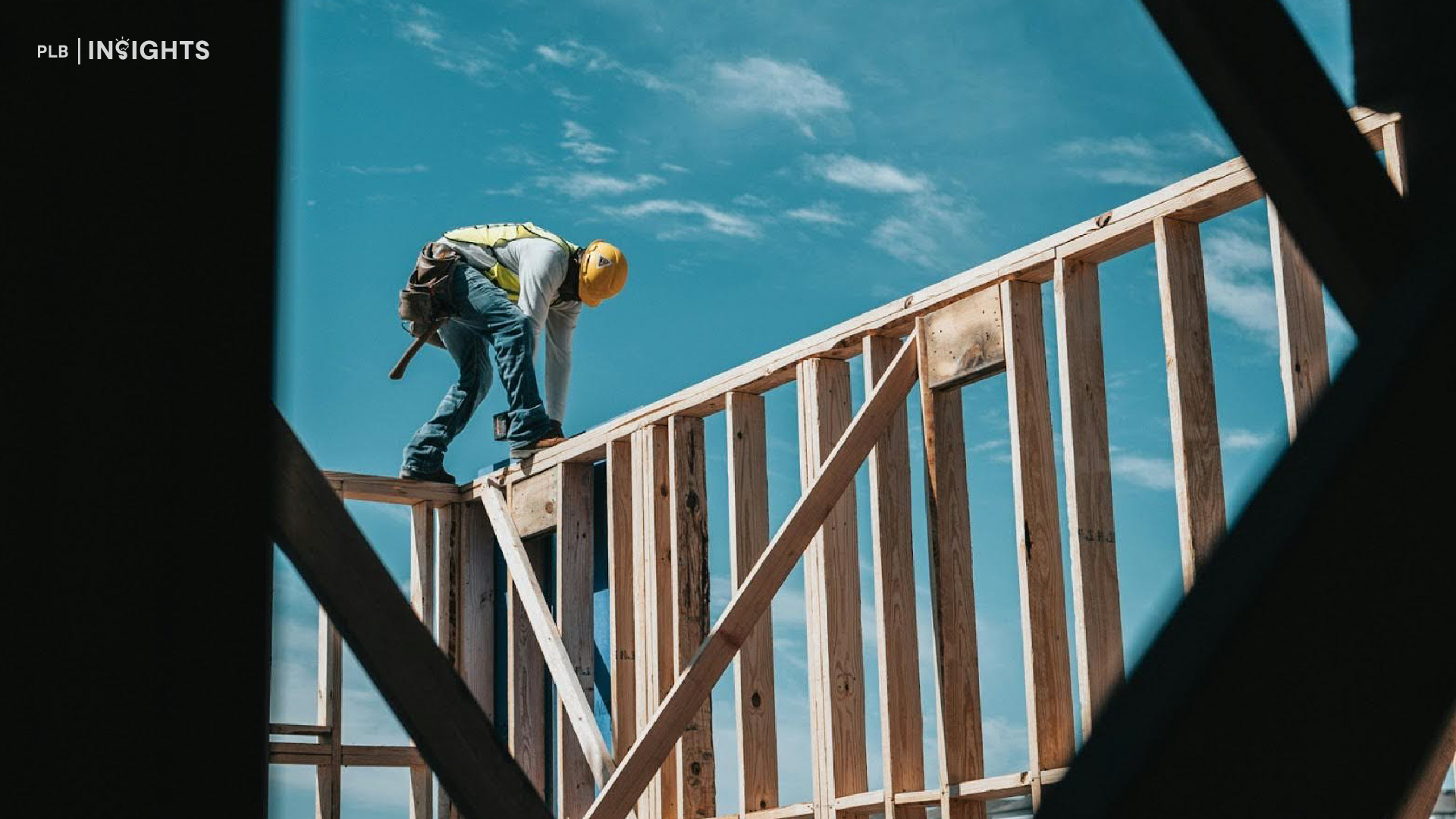
Overview of Pure Landed Property as an Investment
In the context of Singapore’s dynamic real estate landscape, pure landed properties stand out as a distinctive and prestigious asset class. Unlike high-rise condominiums and HDB public housing, pure landed properties refer to real estate where the owner possesses not only the building but also the land it occupies. This category includes terrace houses, semi-detached houses, and bungalows including Good Class Bungalows, which are coveted for their exclusivity, space, and the potential for long-term value appreciation. Although primarily used as residences, pure landed properties offer a distinct investment opportunity that goes beyond conventional real estate standards.
Pure landed properties are often seen as the epitome of wealth and success in Singapore, largely due to their scarcity and the substantial capital required to acquire them. This scarcity is a driving force behind their perceived value and makes them a resilient asset class in both favourable and adverse market conditions. For many homebuyers, the appeal of owning land in land-scarce Singapore is unmatched. Pure landed properties are highly sought after, offering both a valuable investment opportunity and the added benefit of exclusive living.
A key factor in achieving a profitable ROI from a pure landed property is thoroughly understanding its price trends across Singapore’s regions and districts. This article will explore these trends in several districts and highlight important considerations when purchasing a pure landed home in Singapore.
Definition of ROI in Real Estate
Return On Investment (ROI) is a fundamental metric used to evaluate the profitability of an investment. In the context of real estate, ROI measures the financial gain or loss generated by an investment property relative to its cost. For pure landed properties, ROI can be calculated by comparing the net profit from the property (after expenses such as maintenance, renovations or alterations, taxes, agent fees, and mortgage loan interest) to the total investment made. The formula for ROI is typically expressed as:

While the formula may appear simple, many factors must be considered to accurately determine the true value of ROI.
Factors Affecting ROI
Several factors play a crucial role in determining the ROI of pure landed properties:
- Location: Just like with non-landed properties, location plays a key role in the capital appreciation potential of pure landed properties. Price trends for these properties can vary depending on their type and the district or region they are in.
- Property Type: Different types of pure landed properties (e.g., inter-terrace houses, semi-detached, bungalows) may offer varying ROI based on market demand, land size, and the potential for future alterations.
- Market Conditions: Economic factors such as interest rates, inflation, and market sentiment can influence property prices, thereby affecting ROI.
- Property Management: Proper property management, including regular maintenance and recent renovations, can increase the property’s value and boost ROI.
Supply and Demand Factor
With only around 73,000 landed properties in Singapore, including strata landed homes, supply constraints play a crucial role in the landed property market. Due to limited land availability, the development of new pure landed properties is highly unfeasible today. This scarcity, combined with strong demand mainly from wealthy local buyers, drives up prices and boosts ROI potential. Additionally, the growing trend of affluent buyers seeking exclusive, spacious homes for multi-generational living further fuels demand for pure landed properties.
Comparing ROI of Pure Landed Properties vs Other Property Types
Pure landed properties often offer a different ROI profile compared to other property types like condominiums or HDB flats. While condominiums might offer higher rental yields due to their lower initial cost, pure landed properties typically appreciate more significantly over time due to their land component. Moreover, pure landed properties can be more resilient in downturns, retaining their value better than other types of real estate. However, the higher capital outlay required for pure landed properties means that the ROI may take longer to materialise, emphasising the importance of a long-term investment horizon.


Between Q1 2015 and Q1 2024, the average price per square foot (PSF) for freehold non-landed properties increased by 30.2% in the Core Central Region (CCR). During the same period, prices in the Rest of Central Region (RCR) grew by 42.3%, while in the Outside Central Region (OCR), they rose by 26.3%.
For leasehold non-landed properties during the same period, the average price PSF increased by 12.2% in the CCR. In the RCR, the growth was 52.3%, and in the OCR, it was 56.6%.

From Q1 2015 to Q1 2024, the average price PSF for pure landed properties increased by 36.3% in the CCR, an impressive 73% in the RCR, and 47.8% in the OCR.
Comparing the average price PSF growth for pure landed properties to leasehold and freehold non-landed properties in the same regions, pure landed properties generally experienced much higher growth. The caveat here is, assessing the ROI of investing in pure landed properties requires considering many factors beyond just PSF growth.
If you missed it earlier, be sure to catch our Nuggets On The Go episode, where we dive deep into the investment potential of 99-year leasehold landed homes.
Regional & District-specific Price Trends
Regional and district-specific price trends across Singapore significantly affect ROI. For example, properties in the Central region, such as Orchard and Bukit Timah, typically have higher prices due to their prime location and prestige. However, it’s essential to assess whether the entry price allows for a profitable ROI. In contrast, pure landed properties in the East or West regions might offer better value for money while still having strong potential for appreciation. To maximise ROI, homebuyers should carefully evaluate these regional and district-specific trends and look for emerging areas with growth potential.
In this section, we will examine the RealValue PSF Index (a real-time market performance indicator) for landed properties across various districts, each representing a different region. It’s worth noting that some districts straddle the boundaries of two regions, leading to overlapping areas.
District 10

District 10, which includes prestigious neighbourhoods like Bukit Timah, Holland Road, and Orchard Boulevard, is part of the Core Central Region (CCR). Over the five years from August 2019 to August 2024, the RealValue PSF for landed homes in this district increased by 21.6%, rising from $1,900 PSF in August 2019 to $2,310 PSF in August 2024.
District 23

Part of the West region, District 23 includes neighbourhoods like Upper Bukit Timah and Choa Chu Kang. During the same five-year period, from August 2019 to August 2024, the RealValue PSF Index for this area saw a 37% increase, climbing from $1,000 PSF to $1,370 PSF.
District 15

Home to popular neighbourhoods like the vibrant Katong, Marine Parade, and Siglap, District 15 is a highly sought-after district in Singapore’s East region. Between August 2019 and August 2024, the RealValue PSF Index for this district grew by 35.5%, rising from $1,380 PSF to $1,870 PSF.
District 19

Landed homes in District 19, located in the North-East region, have seen some of the highest transaction volumes across Singapore in recent years. This high activity is significant because it often leads to smoother and more robust capital appreciation. From August 2019 to August 2024, the RealValue PSF Index for landed homes in this district increased by 45.1%, climbing from $1,020 PSF to $1,480 PSF.
District 27

District 27, located in Singapore’s North region, includes neighbourhoods like Admiralty, Sembawang, and Yishun. Over the five-year period from August 2019 to August 2024, the RealValue PSF Index in this district grew by 24.7%, rising from $970 PSF to $1,210 PSF.
Renovations And Alteration Costs
When evaluating pure landed properties, it’s important to look beyond overall price trends for the property type and its region and also take renovation costs into account. To make this clearer, we’ve classified landed homes by age and provided estimates for renovation or rebuilding costs, along with expected timelines for completion. These renovation and alteration costs are critical factors that will directly influence the property’s ROI, affecting both short-term expenses and long-term value appreciation. We’ve previously covered renovation and alteration costs for landed homes, analysed pricing trends across different regions, and provided forecasts for landed properties in 2024 and beyond. If you missed it, click here to catch up.

Category 1 Homes: Over 30 Years Old
Homes in this category are the oldest and often require a complete rebuild or extensive reconstruction, leading to the highest additional costs beyond the purchase price. Rebuilding or reconstructing Inter-Terrace and Semi-Detached homes is estimated to cost between $1.5 million and $2 million, equating to $350 to $450 per square foot (PSF).
Category 2 Homes: 20-30 Years Old
Properties in this segment usually need significant Addition and Alteration (A&A) work or major renovations. Builders estimate costs to range from $800,000 to $1 million, translating to $200 to $250 PSF. These extensive projects typically take between 6 to 16 months to complete.
Category 3 Homes: Less Than 15 Years Old
These properties are generally well-maintained and optimised for space, requiring only minimal updates such as plumbing, electrical work, and minor renovations. The estimated cost for these improvements ranges from $200,000 to $300,000, or about $160 PSF, with renovations usually taking 6 to 9 months, depending on the scope of work.
Category 4 Homes: New Builds from Developers
Homes in this segment are newly built and ready for immediate occupancy, eliminating the need for renovations. While this minimises renovation expenses, it is often balanced by a higher purchase price. However, these homes provide the advantage of being move-in ready, offering immediate convenience.
Key Takeaways
When investing in a pure landed property, several critical factors must be considered to maximise your ROI. While examining regional and district-specific price trends is essential, it’s important to remember that a high PSF price does not necessarily equate to higher growth potential. Districts like 10, 15, and 19 have shown strong appreciation, but each comes with its own set of considerations, such as initial entry price and renovation costs.
Renovation and alteration costs also play a significant role in determining the overall ROI. Older properties may require extensive rebuilding, while newer homes may need minimal work, affecting both short-term expenses and long-term value appreciation. Carefully evaluating the age and condition of a property is crucial to understanding the total investment required.
However, ROI should not be the sole factor driving your decision to buy a pure landed home. The features of the property, its location, and neighbourhood must also align with your needs, lifestyle preferences, and long-term goals. Given the substantial monetary investment involved, it’s essential to prioritise your comfort and satisfaction with the property. A property that suits your lifestyle will not only enhance your quality of life but also serve as a more fulfilling long-term investment.
In Summary
Investing in Singapore’s pure landed property market offers a unique opportunity to own highly coveted real estate. Properties in key districts like 10, 15, and 19 have shown impressive growth, but achieving a strong ROI requires a careful analysis of a myriad of factors including regional price trends, renovation costs, and the specific characteristics of the property. A high PSF price doesn’t automatically equate to higher growth potential, so it’s crucial to weigh the initial purchase price and ongoing expenses against the long-term appreciation prospects.
While maximising ROI is important, the property should also align with your lifestyle and long-term goals, ensuring it enhances you and your family’s quality of life. Given the substantial investment involved, it is vital to engage a real estate expert who understands the nuances of the landed market, helping you make the right choice for such a significant investment.
Thank you for reading, and stay tuned! For more detailed insights regarding the landed property market, join our Landed VIP Club and stay updated with the latest market trends and expert advice.











